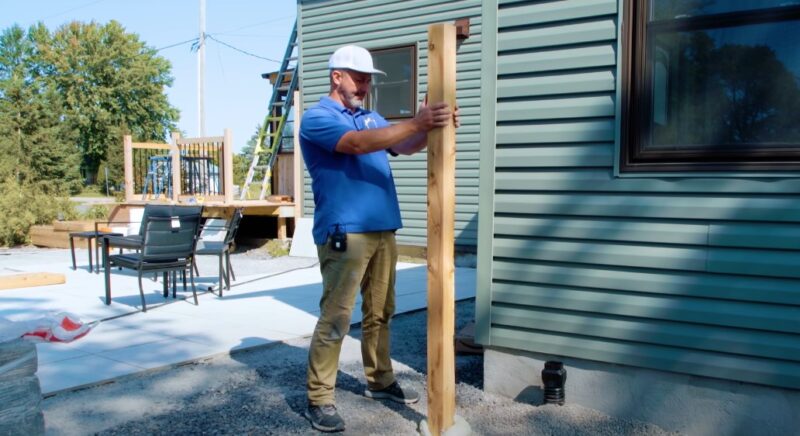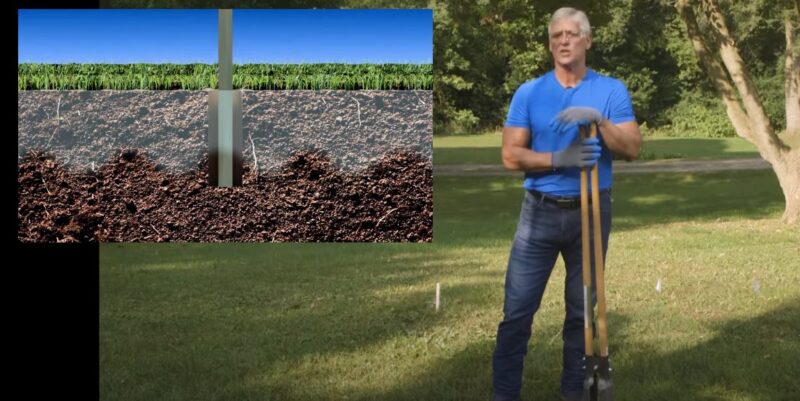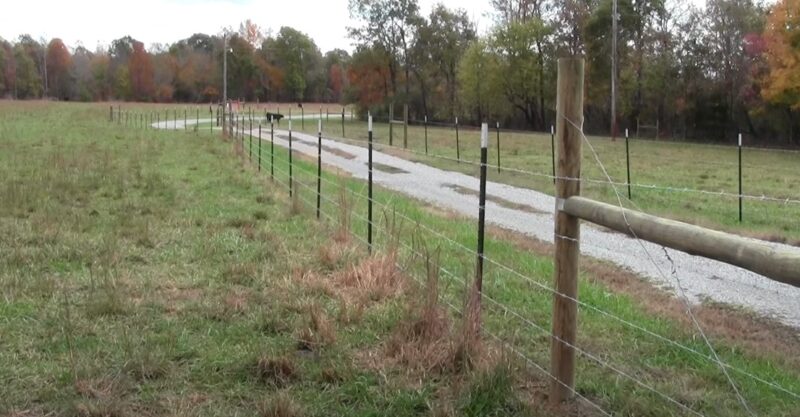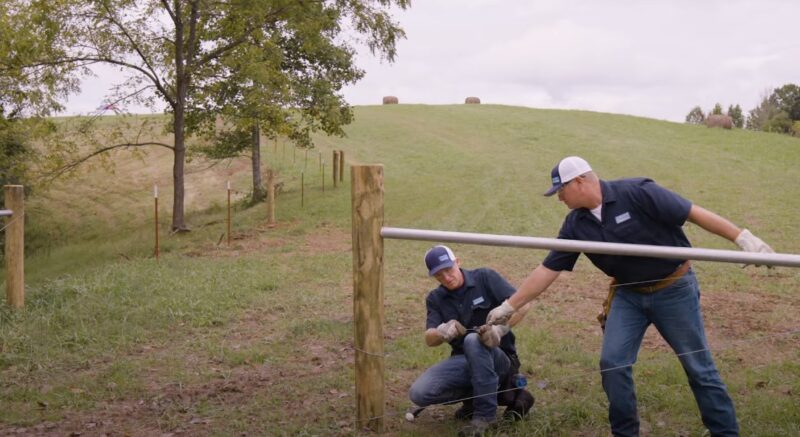Determining the appropriate distance between fence posts isn’t as straightforward as you might think. Various factors such as the type of terrain, the animals you’re housing, and the material of your fence all play a significant role in this decision. It’s essential to consider all these elements to find the ideal spacing that suits your specific needs.
If the posts are spaced too far apart, the durability of your fence could be at risk; conversely, if they’re too close, your fence might look odd. To ensure the correct spacing, it’s always best to follow the guidelines provided by the manufacturer. This article provides some useful tips to help you position your fence posts at the right distance.
What is a fence post?

A fence post is the part of a fence that is driven into the ground, with or without concrete. They are used to support metal fencing, wooden fencing, and other types of fences.
Fence posts can be made from a wide variety of materials, including wood, plastic, metal, or concrete. Of these, metal is the most common as it is very durable and strong. Wooden fence posts are being phased out in modern times as they rot easily and are not as durable.
Concrete fence posts are similar to wood but have the added benefit of being frost-proof. Wood and wooden posts will rot when in contact with the ground and will not fare well in cold climates.
Keep in mind that you’ll need to consider the type of material you’d like to use as a fence post before installation.
What Is Fence Post Spacing?

Post spacing refers to how far apart fence posts should be placed. There are many variables that affect how the posts will be spaced but there are a few basic rules of thumb to follow.
A proper fence post spacing is critical for effective and strong fencing. Otherwise, a small force applied to the fencing may cause it to fall or damage. The standard fence post spacing is typically 6 feet or 8 feet (1.83 meters).
How Far Apart Should Fence Posts Be?
Post spacing depends on three things: the design (style of the fence), the wood you are using, and the type of ground you are fencing. Appropriate spacing for fence posts can maximize a fence’s effectiveness and make it more economical.
T Post Fence Spacing

T Post Fence Spacing refers to the distance that is put between T posts. For most fencing, 3 feet or 4 feet is generally considered enough.
However, T post spacing is not limited to these numbers.
Spacing can be 4 feet, 5 feet, 6 feet, 8 feet, 10 feet, or whatever needs to be for proper fencing. Generally, the further apart T posts are spaced, the more likely they are to collapse in a storm or high winds.
Typically, a single strand of barbed wire is enough to keep cattle contained on a ranch. A single 8 foot T post wired to an end line with one strand of barbed wire is enough to fence for cattle.
The spacing between T posts for this fence will vary. The first T post must be 8 feet back from the end of the fence. That same distance is the starting point for the next T post. The third T post is placed 12 feet back from the end of the fence. The final T post is placed 16 feet back from the end of the fence. This is for a 24-foot fence with 8 foot T posts.
High tensile steel fencing

High tensile steel fencing materials like high tensile field fences are more cost-efficient, aesthetically pleasing, and long-lasting than traditional wooden fences. However, when choosing where to place high tensile steel posts for a new field fence in your yard you must keep in mind spacing between posts and the types of materials you plan to attach the fence with.
High tensile field fence has various types of the fence with has each different of post Spacing. For example, for Field fences (High Tensile), the distance is up to 16.5 feet, Field fences (Low Carbon) is 8 feet, Barbed Wire (Low Carbon) is12-15 feet, Smooth Wire (High Tensile) is up to 30 feet…
Wooden fence
A wooden fence is one of the most common types of fencing used today. For a basic board or picket fence, you can use a post spacing of 4 to 5 feet. For individual fence boards, choose a distance between 5 and 8 feet.
What is the average distance between fence posts?

There are very few standardization practices for the spacing of fence posts, which makes it infeasible to determine an average distance. However, there are some published averages, which range from 3 to 7 feet.
In the United Kingdom, an average of 6 feet is used. In the US, fence posts are typically spaced 10 feet apart along a property line and 6.5 feet apart within a property, but these standards will also depend on the type of fence and the materials used.
F.A.Q
Should fence posts be 6 or 8 feet apart?
The spacing of fence posts is determined by the length of the fence; the posts should be evenly spaced. If the fence is 30 feet long, space the posts six feet apart; if the fence is 40 feet long, space the posts eight feet apart.
Moreover, the spacing also depends on the type of wood, the kind of livestock you own, and whether or not you want to install electrified wire.
If you use wood that rots quickly, which means you have to replace the posts every few years, then 8 feet apart is a good distance.
If you use wood that doesn’t rot, which means you won’t have to replace the posts for several decades, then 6 feet apart is a good distance.
If you use wood that rots and you don’t want to replace the posts, then install electrified wire.
For an 8-foot fence, how deep should a post be?
The answer to this question depends on what you are using. If you’re using wood, it should be at least 2 feet deep in the ground. If you’re using metal, it should be about 1 ½ foot deep, around 18 inches deep.
Can fence posts be 10 feet apart?
Maybe, but shouldn’t. By definition, a posthole is used to support a post or pole that acts as a structural element. A structural element is a part or piece that supports a whole system or structure. In this case, the postholes support the fence posts. The distance between two structural elements is dictated by the structural load.
The distance between two fence posts should depend on the size and strength of the material used to build the fence (e.g. wood, metal, welded wire) and the types of forces that are acting upon it (e.g. wind pressure, human). Fence posts are often spaced too far apart, which leads to the fence being less effective or even falling down completely.
What is the maximum distance between fence posts?
Many areas have laws that dictate the maximum allowable distance between fence posts. In order to comply with these specifications, a surveyor needs to know what the maximum allowable distance is between posts.
The majority of fence posts can be placed 8 to 12 feet apart. A high tensile fence can have wider spacing, for field fence styles requiring line posts up to 15- 20 feet, and for high tensile barbed and smooth wire is up 20-30 feet.
Conclusion
In the end, I think that it’s important to understand how far apart to space your fence posts. This is a problem that plagues homeowners, ranchers, and farmers alike. These measurements are based on the height of most horses that will be traveling through your pasture and pasturing area, but you can change this measurement to fit your needs. When deciding how far apart to set up fences for horse fencing, make sure they’re high enough so that no one can jump over them!
